Homework assignments (4,5 credits) in Computational Physics
Homework assignments (4,5 credits) in Computational Physics
Homework assignments (4,5 credits) in Computational Physics
Create successful ePaper yourself
Turn your PDF publications into a flip-book with our unique Google optimized e-Paper software.
9 Write a Monte Carlo program to simulate the one<br />
component plasma (OCP)<br />
Instructor: Olle Edholm<br />
Use periodic boundary conditions and make the simulations at fixed N and Γ (see def<strong>in</strong>ition<br />
below). Calculate the energy and heat capacity per particle. Read first the second<br />
(classical) reference below (http://prola.aps.org/abstract/PRA/v8/i6/p3096_1). Try<br />
to reproduce some of the results of that article. You may first start with a cutoff method<br />
but you have to use the Ewald method (see the first reference) <strong>in</strong> the end. (Reference:<br />
Allen and Tildesley, and J.P. Hansen Phys. Rev A. 8 (1973) p. 3096-3109)<br />
The properties of the OCP do not depend separately on density and temperature,<br />
but these can be comb<strong>in</strong>ed <strong>in</strong>to one dimensionless parameter:<br />
Γ = 1<br />
4πɛ 0<br />
(Ze) 2<br />
k B T (4π 3 ρ)1/3<br />
If you use the dimensionless coord<strong>in</strong>ates: y i = x i (4πρ/3) 1/3 , the Coulomb energy between<br />
two particles may be written:<br />
u(r)<br />
k B T = Γ r ,<br />
with r be<strong>in</strong>g the <strong>in</strong>ter particle distance <strong>in</strong> the dimensionless units def<strong>in</strong>ed above. If Z = 1<br />
(protons) and T=300K, Γ = 1 corresponds to a low number density (about 10 21 protons<br />
per m 3 ) while Γ = 200 corresponds to more the k<strong>in</strong>d of densities one has <strong>in</strong> ord<strong>in</strong>ary<br />
matter (10 28 protons per m 3 ). Vary the parameter Γ <strong>in</strong> this range. In a typical plasma<br />
the temperature is usually much higher, but also the density. S<strong>in</strong>ce the density is taken<br />
to the power one third, even typical conditions <strong>in</strong>side a white dwarf star correspond to<br />
quite small values of Γ.<br />
Observe, f<strong>in</strong>ally that you have to <strong>in</strong>clude the attractive <strong>in</strong>teraction with the electrons<br />
as a uniform attractive background. This may be justified s<strong>in</strong>ce at typical plasma conditions<br />
the electrons can be treated as a quantum mechanical highly degenerate Fermi-Dirac<br />
gas. Us<strong>in</strong>g a cutoff, you may add this contribution (which can be calculated analytically)<br />
<strong>in</strong> the end. Us<strong>in</strong>g Ewald summation you have to <strong>in</strong>clude this when you calculate the electrostatic<br />
repulsion between the protons. If you do not do this each part of the <strong>in</strong>teractions<br />
will diverge separately.<br />
6


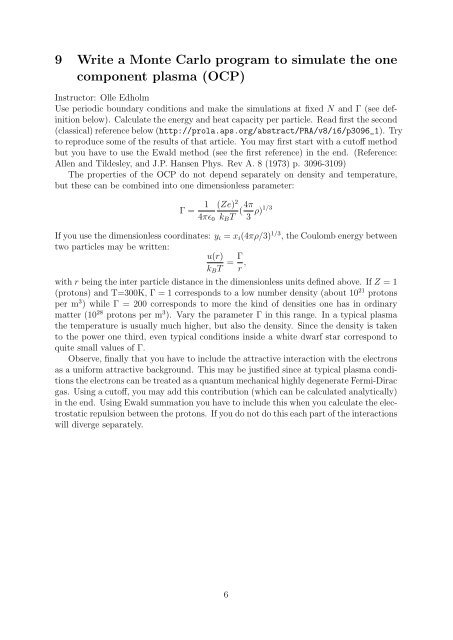
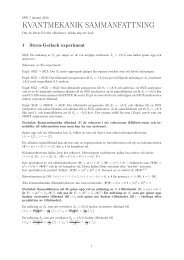

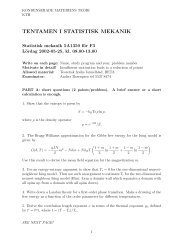
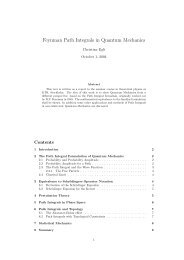
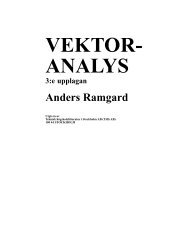
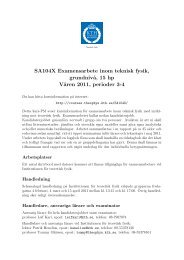

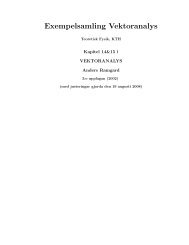

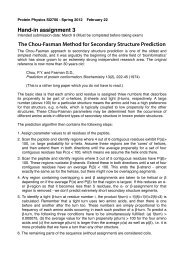

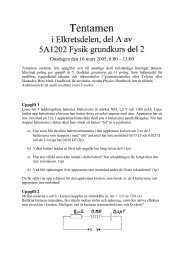
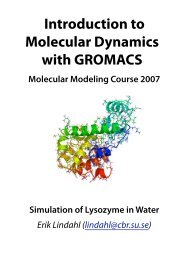
![[VAR]=Notes on variational calculus](https://img.yumpu.com/35639168/1/190x245/varnotes-on-variational-calculus.jpg?quality=85)